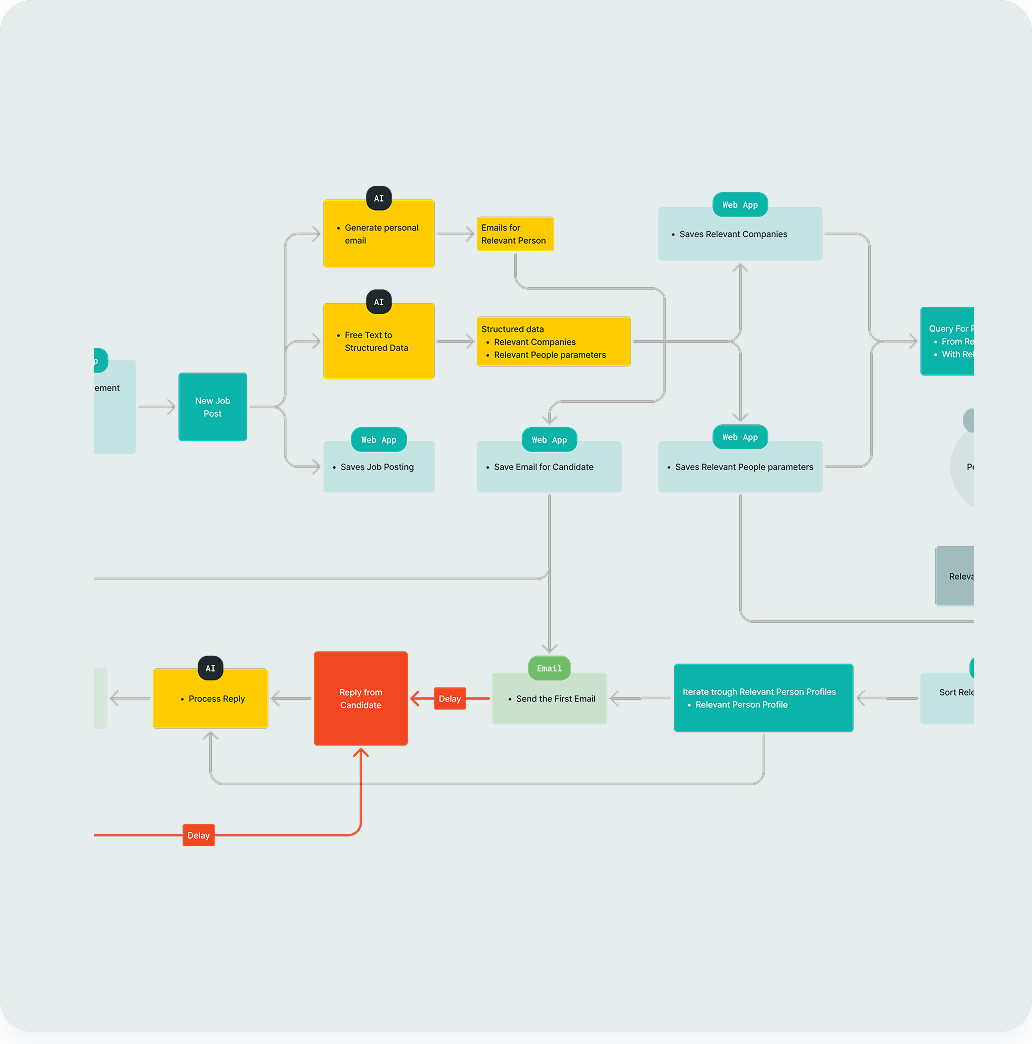Product strategy
Stop Guessing, Start Building
Gain clarity on your development strategy by the end of the week. VeryCreatives helps you navigate product discovery, MVP scoping, and risk mitigation with ease.
Our services are available worldwide,
including United States

Let’s turn your vision into a plan
Define
Document each element of your new digital product. From product discovery to feature scoping, we maximize your efficiency in the early stages.
Design
Our team uses your insights to create a blueprint for your MVP: with precise functionality, proposed technologies, and cost estimates.
Deliver
Start building your SaaS on your own, or let’s do it together with the VeryCreatives MVP development team – specialized in SaaS design.
GREG BILLINGE
COO of pinqDR
Your Workshop Agenda

Day 1: Discovery Workshop
We start with hearing your ideas, understanding your vision, and defining your business goals. Then, we take it from the ground up. We dive into the business model, objectives, market conditions, challenges, risks, and target audience. All this knowledge will power all the next steps of your product development.

Day 2-3: Research, team discussions
On days 2-3, we go over technological research, development concepts, and identification of further risks. These steps lead to the definition of your product’s key features. Here, we also design a “skeleton” of the app: we map out the user journeys and create the basic wireframes of the major features It’s also the best moment to gather all suggestions and estimates for the future.

Day 4-5: Scoping Workshop
At this stage, we show you wireframes, MVP features, and the main user journeys. Then, we ask you for feedback and fine-tune everything to make your MVP just perfect!

Day 6: Handover
You receive the product blueprint, 100% defined MVP scope, and crystalized product journeys. As you have everything precisely defined, you can determine future development costs with high precision. Time to turn your dream into a reality.
Participants
Who will attend the workshop?
From the VeryCreatives side
Product Strategist
Leads and shapes the process to match your needs, mitigate risks, and clarify business objectives.
Product Designer
Ensures your product follows the best UI/UX practices. Answers questions about user flows, design, and usability.
Developers
Ensure all plans crafted during the workshop can be turned into a real, efficient product.
From your side
Key Stakeholder
Usually, you. The most essential participant with the vision in mind. Provides insights on the strategic business objectives.
Product Owner
Understands the business needs well and provides valuable insights & feedback.
Anyone else?
Anyone who can contribute to the product with insights. Examples: Co-Founder, CTO, CMO
Deliverables


Philipp Martin
CEO & Co-Founder of Reachbird
Plans & Pricing
Choose the plan that fits your needs
"The Full Package to De-Risk Development."
€2,990One time fee
What’s included:Workshops, co-creationProduct DiscoveryUser Journey MappingMVP scope & FunctionalityTechnology ResearchDevelopment StrategyCost EstimatesHandout Material"The First Step on Your Journey,"
€950One time fee
What’s included:2-hour long workshopProduct Discovery LiteMain User JourneyHigh-level MVP ScopeHandout Materialwhy founders
pick verycreatives?
We turn raw ideas into working SaaS, without the chaos
Built for non-technical founders
We translate vision into product plans, so you don’t need to “speak dev”
Radical transparency
Straight talk on scope, budgets, and deadlines from day one
One partner, end-to-end
Strategy → UX/UI → MVP → ongoing Team-as-a-Service. No vendor juggling
Senior talent on tap
In-house PMs, designers, and engineers who’ve shipped real SaaS
1-Week Strategy Jumpstart
Align scope, risks, and success metrics fast—then start building
Momentum by design
Tight feedback loops, iterative releases, and constant learning
Embedded, outcome-focused
We co-own results, not just tasks. Expect business-first trade-offs
Proactive problem-solvers
We surface risks early and bring options—not obstacles
Predictable delivery
Clear roadmaps, weekly demos, and next-step clarity— no surprises
Global-friendly collaboration
EU/UK/US/UAE time zone coverage and async habits that respect your calendar.
Is VeryCreatives Right for You?
You need to launch an MVP under a strict timeline in a regulated industry without sacrificing quality.
We delivered a fully functioning healthcare web app MVP in just 4 months. It included food tracking, glucose graph integration, chat, weekly reports, and CMS features.
They delivered on time, kept the budget, and included all features agreed in the contract. They went the extra mile.

Lea Paradzik
Venture Builder, MavieMe
You want to build a cutting-edge SaaS product in a fast-changing industry and need a partner who understands both technology and business.
We partnered with Reachbird to design and build a robust influencer marketing platform powered by smart data and AI. Our solid process kept development structured while allowing flexibility to innovate.
We were unsure on the specifics of how to achieve this, but VeryCreatives impressed us with their expertise and design direction. They understood our brief and helped us shape the solution.

Philip Martin
CEO & Co-Founder of Reachbird
You want an engaged, mature development team that collaborates smoothly with your startup.
We provided a balanced team (PM, backend, frontend, and design) who worked hand-in-hand with the client. Weekly and ad-hoc syncs kept communication clear and decisions fast.
Their overall approach is very mature and engaging. Communication has been good, and the team is easy to work with.

James Walker
CEO, JamDoughnut
Contact Us
…if you need SaaS products, applications, intelligent platforms that enable you to achieve serious results and ambitious goals.
Book a free 30-minute assessment call to find answers to your product development challenges.
What is going to happen?
Our Account Manager colleagues will contact you to schedule an online consultation with our founders, Máté and Feri. In this (free of charge) consultation, they will discuss your idea and provide expert feedback on product development.
Your data is safe
Don't worry, we won't use the information you provide here for anything we wouldn't want you to do.
What time zone are you in?
We are based in Budapest, Hungary and our time zone is GMT+2. This gives us the flexibility to serve both EU and middle-eastern clients.
Or would you instead write an email?
Feel free to write to hello@verycreatives.com! We usually reply by the next working day at the latest.
Find the answer you need
It's not about the hours we put in, it's about the output you get.








